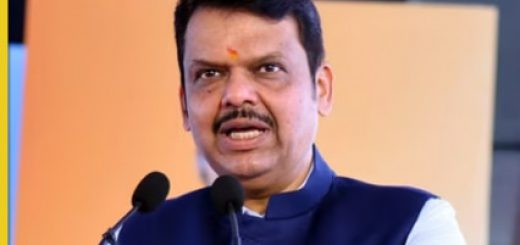Shahid Afridi: An enigmatic career comes to an abrupt end
Shahid Afridi’s amazing career came to an end on Friday after a World Cup quarter-final loss to Australia. (Source: AP)
So that’s the end of an era for Pakistan cricket. Shahid Afridi will no longer be seen bowling his fast leg-breaks in ODI cricket, at least that’s his decision for now. (Full Coverage| Points table| Fixtures)
The ODI format was made to order for Afridi. He made his initial mark as a batsman in hurry. He struck the fastest ODI hundred in 1996 and held the record till January 2014. Then his fast Anil Kumble type leg-breaks became his USP. Afridi improved as a bowler, even as a batsman he slipped down further in the order. From being an opener in the late 1990s to batting at as low a number as seven, Afridi did it all.
SCORECARD: Australia vs Pakistan
As his bowling gained importance, Afridi improved majorly, he even became the highest wicket-taker of the 2011 World Cup, alongside Zaheer Khan, with 21 wickets in eight matches at an average of 12.85 and economy rate of 3.62 with a strike rate of 21.2. He was also the captain then, but could not take the side beyond the semi-final. Till Pakistan’s golden generation were around, Afridi was the hit or miss all-rounder, but since about 2003 his responsibility increased. He was also being looked as the spinner who would tie up an end and pick wickets.
READ: When Shane Watson shone in the face of Wahab Riaz’s fiery bowling
But he slowly started slipping in the last two years, which started hurting Pakistan. In 49 matches since January 2013, Afridi picked 47 wickets at a costly average of 40.53 at an economy rate of 4.77 and a strike rate of 50.9. This proved costly for Pakistan as they struggled to gain balance in their bowling attack with Saeed Ajmal and Mohammad Hafeez being under a cloud for their actions.
However, even as his bowling suffered, Afridi seemed to have discovered his batting mojo. Since January 2013, he struck 989 runs at an impressive strike-rate of 146.73, which was much higher than his career number of 117. Also in this phase he struck six half-centuries.
Perhaps his most important knock was the unbeaten 18-ball 34 to fashion a famous one-wicket win over India in 2014 Asia Cup. Afridi was almost like Javed Miandad, as he smashed a six in the last over to seal a famous win. Thereafter at ‘home’ against New Zealand in United Arab Emirates (UAE), Afridi struck two half-centuries in five matches in November-December 2014. In fact in that five-match series, Afridi’s scores were 61, 27, 55, 49 and 13. Afridi the batsman was returning it seemed. He then struck 67 in the first of two ODIs against New Zealand at Wellington.
Photos: Emotions run high as Pakistan crash out of the World Cup
But when the World Cup came along, everything went wrong. Afridi the batsman and the bowler seemed to have disappeared. There were brief appearances by both the Afridis, but sadly not one stayed long enough for Pakistan to repeat the 1992 World Cup win. In seven matches Afridi picked just two wickets at a disappointing average of 141 with a relatively high economy rate of 4.94. Even with the bat, Afridi was able to score just 116 runs in seven matches.
At the World Cup, Afridi was no longer the all-rounder that Pakistan could bank on. Also because of his stature, Pakistan could not think about dropping him from the playing XI. As a result, Yasir Shah, the impressive leg-spinner, was never considered beyond the first game against India.
As Afridi retires from the ODI game, as promised, the world will remember him as the man who could have almost been something more as a cricketer than what he ended as. He finished as a Test cricketer and captain in 2010, gave up ODI captaincy in 2011 and is still Pakistan’s T20I captain. The World Twenty20 in India in 2016 is expected to be his final hurrah as an international cricketer. Let’s hope for Indian fans’ sake he is able to provide one final dekko at might have been!
Source:: Indian Express





